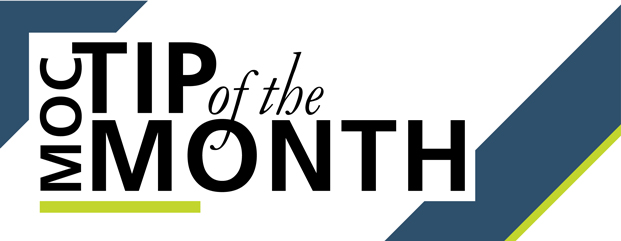MOC Tip of the Month
By Shahid Ahmed
Complete a Personal Learning Project in 6 simple steps

Interested in completing a Personal Learning Project (PLP) but not sure where to start? My six-step process outlines the basic steps you need to take to address a question, issue or dilemma in your professional practice with a PLP.
Log your PLP credits: You can claim two credits for each hour spent on these six steps.
Use these 6 steps for a PLP
- Identify a practice issue that stimulated further learning.
- For example, I’m an oncologist living in Saskatchewan and one of my new patients is a Métis woman. I want to develop a greater appreciation of her culture and also the cultural awareness, sensitivity and competency skills I need as her health care provider to give her culturally safe care.
- Frame your issue into a question, problem statement or objective.
- I ask myself, “What cultural considerations must I be sensitive to in order to provide culturally safe care to the Métis patients in my practice?”
- Develop an action plan to investigate — include scope, timeframe and where to look for resources.
- I decide to complete this project over a number of weeks and to dedicate several hours of my professional development time to it. Specifically, I plan to
- consult with a Métis health care worker,
- review both peer-reviewed and gray literature about culturally safe care for Métis patients, and
- take a short course on Indigenous cultural awareness, if possible.
- I decide to complete this project over a number of weeks and to dedicate several hours of my professional development time to it. Specifically, I plan to
- Acquire and appraise the resources/data you selected.
- First, I read a fact sheet about Métis culture from an Indigenous health collaborating centre. I learn that Métis family units go beyond that of the immediate family and I realize that some of my Métis patients may wish to involve extended family members in the continuum of their care.
- I look online for a recent journal article, lecture or medical podcast about best practices for physicians in providing culturally safe health care to Indigenous patients.
- I reflect on whether the sources I picked were relevant to my situation and patients. I decide that the recommendations I read on how to adapt the delivery of health care services to support different Métis customs and traditions were of particular value.
- Reflect on the outcomes or conclusions you reached, and the implications for your practice.
- I feel it is important to share with all my patients my wish to serve them in a culturally safe environment.
- During our first consultation together, I encourage my new Métis patient to discuss the customs and traditions that are important to her when receiving care. For example, one of the questions I ask her is whether she wants to bring family members to her consultations with me.
- In the interests of continuous learning, I decide to build an ongoing relationship with a Métis health care worker who can help me understand how to make my future Métis patients feel more comfortable.
- Record your work in MAINPORT ePortfolio.
- Now that I’ve completed my PLP, in my MAINPORT ePortfolio I record in one or two sentences the conclusions I reached, the actions I took or will take, and I report the number of hours spent on each activity. MAINPORT ePortfolio assigns two credits per hour spent on each activity.
Extra credit: Revisit your project
After implementing changes to your practice, you can revisit your PLP. For example, I might review my Métis patient case files two years later to assess whether the changes I have made to my practice have made a difference to these patients’ overall sense of wellbeing and comfort in our interactions.
I hope these six steps prove helpful for you as you pursue a PLP of your own. PLPs are truly wonderful problem-solvers. Not only are they a rich form of lifelong learning, they are one of the most flexible and adaptable learning activities in the MOC Program framework!